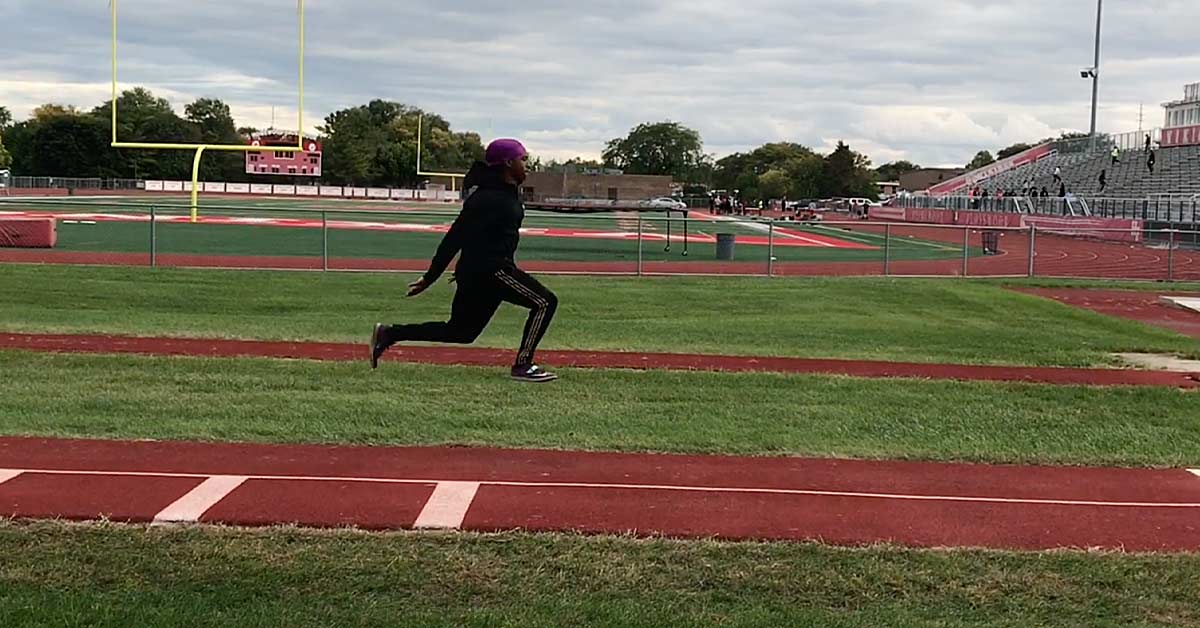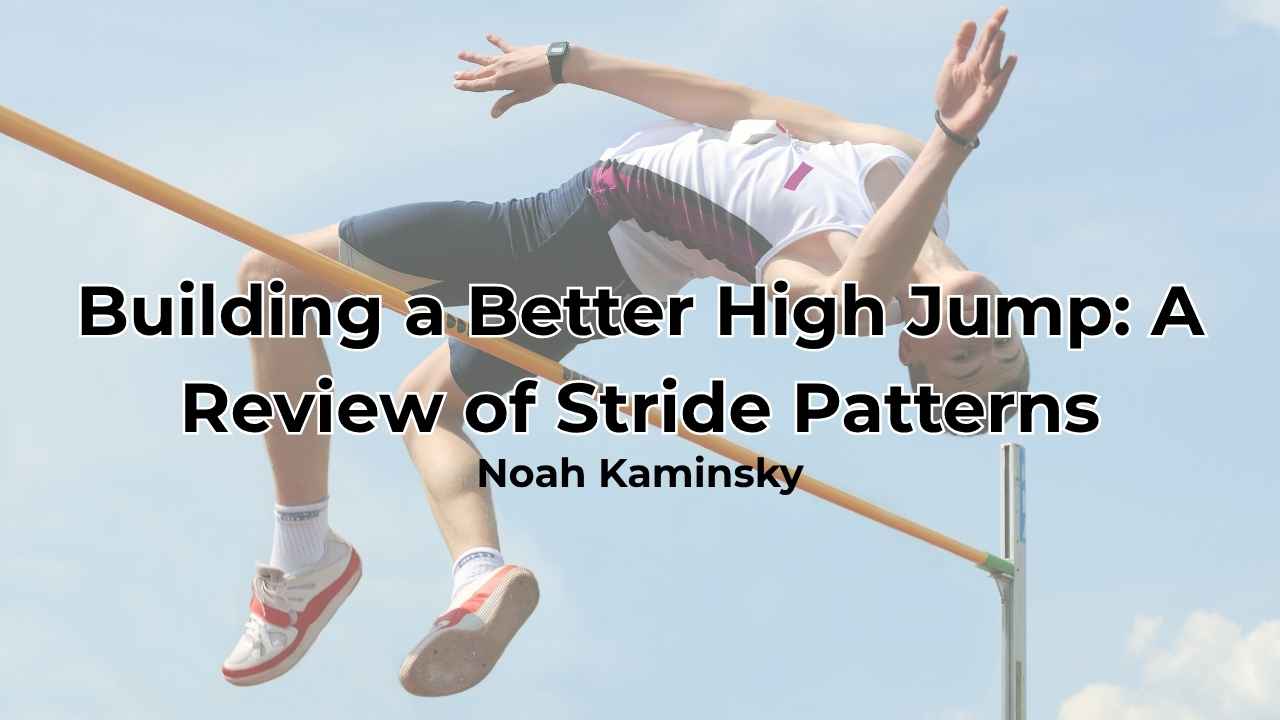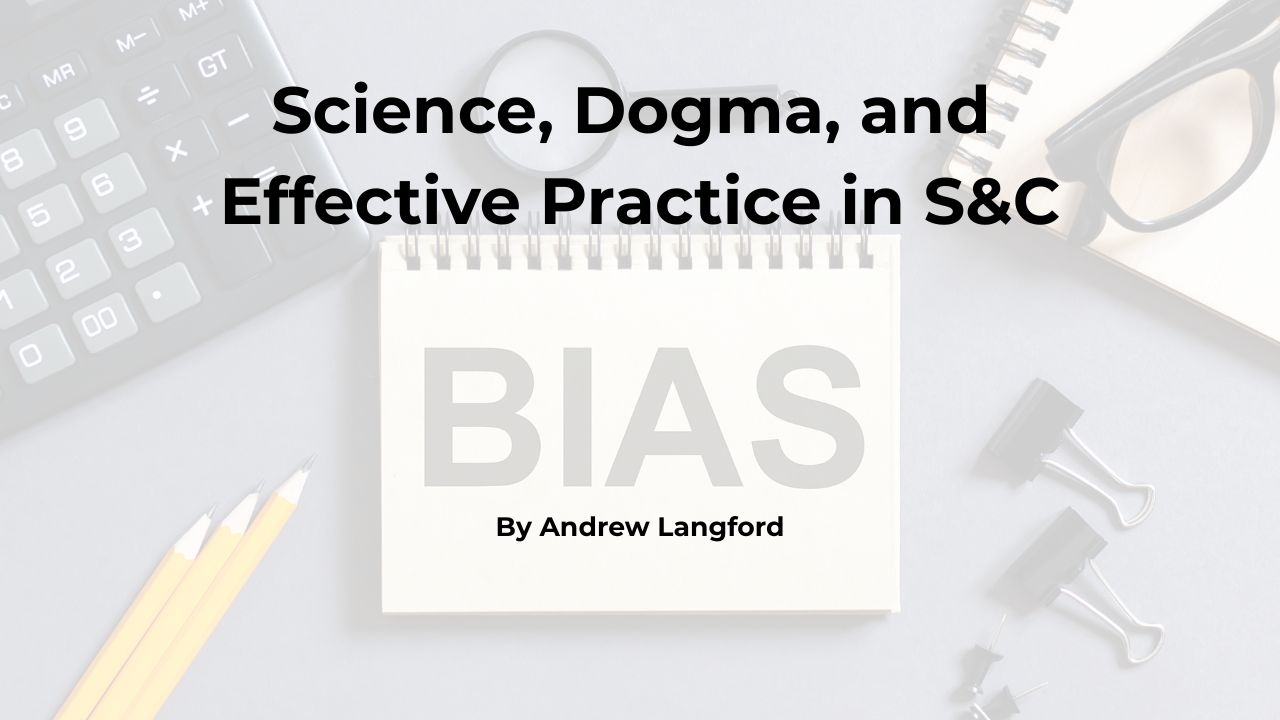Part of the allure of coaching is that every season is unique. In narrowing the focus to high school track and field, we do have a portion of our athletes who are with us for four years and go through a “typical” progression. However, there are always new athletes in every class at the start of the season. In addition, maturation can make a returning athlete completely different than the year prior—for better or for worse.
Due to the variance in clientele, there are items we choose to emphasize that are specific to the needs of the group. These decisions tend to be made after the first couple of weeks and then are monitored throughout the course of our season. All this being said, the demands of the sprint, hurdle, and jump events remain constant, so the vast majority of what we do year to year is consistent. We tend to follow an 80/10/10 model.
I believe I’ve heard the following breakdown from ALTIS’ Stu McMillan, although his percentages may have been different:
- 80% of items on your training menu should consist of what you know are effective.
- 10% should be items you are confident will be effective.
- 10% should be items you have a hunch will be effective.
[adsanity align=’aligncenter’ id=9056]
What I’ve Added
Here are the items I’ve added over the past few years.
1. Crescendo Plyometrics
Carl Valle did us all a favor by producing numerous pieces on the Scandinavian Rebound Jump Test (SRJT).
Video 1: The SRJT has the athlete focus on progressively jumping higher as the rep progresses while trying to minimize ground contact time throughout. RSI (jump height/ground contact time or flight time/ground contact time) is the primary measurement.
After obtaining a MuscleLab Contact Grid, I began to utilize it and really liked its simplicity and how effective it was at getting athletes to learn to bounce. A lightbulb then clicked for me that it would be a fantastic option to use the same methodology of increasing intensity with all plyometrics. Crescendo skipping, bounding, galloping, and run-run-jumps have become a staple within our weekly programming. There are many reasons why I love them:
- The lower intensity at the beginning of the rep allows for athletes to focus on a technical aspect (such as foot contact), and ideally, it gets locked in before the higher intensity found at the end of the rep.
- Working through a bandwidth of intensities creates an athlete with better awareness of their outputs. I think it is common in track (and training in general) to be hyper-focused on maximal outputs—I certainly love watching athletes sprint and jump maximally! However, I think there is value to exposing athletes to a spectrum of intensity.
- I often reference the Rewzon long jump study, brought to my attention by Joel Smith, in which exposure to sub-max efforts allowed for a higher degree of improvement in maximum capability when compared to maximum effort-only training. Working through crescendo reps has the ability to take care of either sub-max-only efforts or sub-max to max efforts!
- I find that they are a more logical way to manage intensities. For example, instead of having an athlete dive right into bounding maximally for eight contacts, a coach could have them focus on being maximal on the last two, then the last four, the last six, and then all eight over a four-week period.
Video 2. Here the crescendo plyometric of choice is a power bound. The athletes were instructed to begin with a 50% effort and work up to 75%.
2. Asymmetric Locomotion
I picked up the idea of asymmetric skipping from Nick Newman about two years ago, and like the crescendo plyometrics, I have applied it to a variety of other forms of locomotion. The asymmetric label comes to be because the goal is to focus on operating at a high intensity on one side and an easier intensity on the other.
Video 3. In this asymmetric skip for distance, I am focusing on operating at a maximum intensity with my left leg and an easy intensity with my right leg.
Here are the reasons I believe asymmetric locomotion has staying power in my programming:
- It is a fantastic bridge between skills. Asking a novice athlete to bound or skip for distance often leads to unattractive visuals. Asking them to focus on pushing hard on one side and easy on the other tends to make for a much more appealing visual. Once they have the feeling of each side, they usually are more able to link the two sides together.
- It is more specific to what they see within their event (referring to the unilateral jumps found in track and field). If I have an athlete who is struggling with projecting their hips to create quality hip displacement, an asymmetric skip or bound for distance is a fantastic way to drill the feeling they need. If any athlete has too shallow of a takeoff angle in long jump, asymmetric skips for height (along with gallops and run-run-jumps for height) would be part of the prescription to help correct that issue.
- If an athlete has a nagging injury on one leg, but the other is fine, asymmetric locomotion is an option that can be considered to ensure there is not a big detraining effect on the healthy leg. Proceed with caution here!
What I’ve Dropped: Minimum Effective Dose
Before the haters of this phrase celebrate—and the lovers throw shade at me—I encourage all to walk down this path with me. First and foremost, this is highly specific to me, and my hope is that those on both sides of the issue can see where I am coming from.
I think the first time I heard the phrase “minimum effective dose” was around 2015. It was a concept that fit the trends I had noticed within the context of training female high school track and field athletes. (I was the head girls’ track coach at the time—the main events I coached were sprints, hurdles, and high jump.) I wrote about this trend in great detail here. I was all-in on the concept, and to this day I feel it is something that the majority of coaches of any sport at all levels need to hear, as junk volume is probably the biggest deterrent to high performance after mental health, diet, and sleep.
In 2016, I made the transition to being an assistant on the boys’ track and field staff, with an emphasis on coaching the long/triple/high jumps and the overlap that occurs with sprinters. I took the idea of minimum effective dose with me to the jumps, which was based on what I saw with the girls I coached and my own personal experience as a jumper (primarily high jump). Simply put, I knew that I never performed well in high jump if I was not feeling bouncy. There was no way for me to just grind through it—and as an athlete, I was a grinder.
The male athletes I coached trained at a very high intensity with low volume, and they performed well. However, if we fast forward to right now, seven years into the position I have with the boys, I can say with 100% certainty that the athletes I coached early on in my current stint were substantially undertrained.
While the ideal is to train every athlete the perfect amount, this is of course a challenge at the high school level, as we are only in direct contact with our athletes for around 5-10% of the time. A few athletes win the “other 22 hours” away from us, but the majority leave a lot of potential gains left on the table. I also subscribe to the Vern Gambetta and Harry Mara idea that I’d rather have an athlete trained at 90% of what is ideal than 1% over what is ideal. My personal problem was I may have trained some of the athletes I coached to 75%.
Here is an example, discussing flying sprints and the horizontal approach. But before that, I will outline some terminology:
- 10-meter fly—A timed 10-meter window preceded by a 20- to 30-meter run-in.
- Approach pop-off—A full approach rehearsal close to realistic penultimate and takeoff steps (rolling contacts). The jumper jumps off the board but lands in the pit upright (not undergoing a full landing).
- Approach run-through—A full approach where the jumper simply runs through the board into the pit. Here, the penultimate and takeoff steps tend to be much less realistic (if they happen at all).
Early on in coaching jumpers, I equated long jump approach rehearsal to a 10-meter fly. So, if the sprint workout of the day was 3-4 x 10m fly, I would have jumpers run 2 x 10m fly and try to get approaches knocked out in three or less. I currently believe the fly-to-approach ratios are:
- Pop-off – 1:1.5 or 1:2
- Run-through – 1:2.5 or 1:3
When the jumper “pops off” the board and takes close to realistic penultimate and takeoff steps, there are greater braking forces than when compared to just “running through” the board. Most of the time, I prefer the jumper to “pop off” in the rehearsal. This is more like an actual jump, and the spacing of those last two steps can vary when compared to when the athlete just runs through. (I’ve seen up to an 18-inch difference.) However, for athletes who need reps to develop consistency in the body of the approach, running through the board makes sense at times to minimize the load presented on the last two steps. It is easiest to do this away from the jump pit, so the athlete is not tempted to pop off into the sand!
The reason that I feel more approaches can be accumulated than 10-meter flys is because a high school athlete typically attains 80-95% of their maximum velocity on the runway. This is due to the steering component from having a takeoff target. The trade-off for greater accuracy is submaximal velocity. Since the velocity is submaximal, the approach is less demanding from a neurological standpoint. Because of the jumper attaining submaximal velocity on the runway (unless there is a huge tailwind), I tend to classify either approach’s rehearsal style as acceleration work instead of maximum velocity work.
By using minimum effective dose as an identifying descriptor of training, I unintentionally undertrained athletes. I am certain this impacted their ability to become technically proficient. Share on XCircling back to eliminating minimum effective dose as a descriptor of my training, I have found that athletes are able to tolerate quite a bit more acceleration volume than maximum velocity volume. By using minimum effective dose as an identifying descriptor of training, I was unintentionally undertraining athletes. I can say with certainty that this impacted their ability to become technically proficient. I could also argue that key metrics would have been better with a slightly larger training stimulus.
- Old Long Jumper Maximum Velocity Workout
- 2 x 10m fly
- 3-4 approach rehearsals
- Current Long Jumper Maximum Velocity Workout A
- 3 cycles
- 1 x 10m fly, rest 4 minutes
- 2 approach pop-offs, rest 3 minutes between each
- Current Long Jumper Maximum Velocity Workout B
- 2 cycles
- 1 x 10m fly, rest 4 minutes
- 2 approach run-throughs, rest 3 minutes between each
- 1 cycle
- 1 x 10m fly, rest 4 minutes
- 3-5 approach run-throughs, rest 3 minutes between each
- A current “C” option could be a hybrid of “A” and “B”
Although it is not always possible, I prefer to toggle the maximum velocity work with the approach work (which I view as acceleration work) in this style whenever possible. I think it provides a challenge in coordination, which makes athletes more aware of their different gears. It also helps them deal with the demands presented to them during a meet: two jump attempts, sprint event, back for more jump attempts.
This training toggle-style was a carryover for me from coaching hurdles. Prior to the start of a meet, hurdlers would look great in warm-ups over the hurdles (utilizing a great shuffle technique). Then, they would run in the 4x100m relay and come back to hurdles with normal sprint mechanics, destroying the hurdles (and their bodies) in the process because their stride length was too great between the hurdles.
[adsanity align=’aligncenter’ id=9054]
What Might Be Right for You, May Not Be Right for Some
The above example is how I let the phrase “minimum effective dose” have a negative influence on my training design. I firmly believe that I am in the minority here. Overtraining is certainly more common than undertraining at the high school level, and most likely also at levels below and above. There are no doubt coaches out there who need to hear the minimum effective dose message!
Overtraining is certainly more common than undertraining at the high school level. There are no doubt coaches out there who need to hear the minimum effective dose message, says @HFJumps. Share on XAs a math teacher, I often find myself instructing students to keep in mind where they need to go before they dive in and complete work. This bird’s-eye view often saves them from going down a suboptimal path. We can all better serve our athletes by being as vigilant as possible in seeing the entire picture.
Since you’re here…
…we have a small favor to ask. More people are reading SimpliFaster than ever, and each week we bring you compelling content from coaches, sport scientists, and physiotherapists who are devoted to building better athletes. Please take a moment to share the articles on social media, engage the authors with questions and comments below, and link to articles when appropriate if you have a blog or participate on forums of related topics. — SF





